Bumblebee surveys
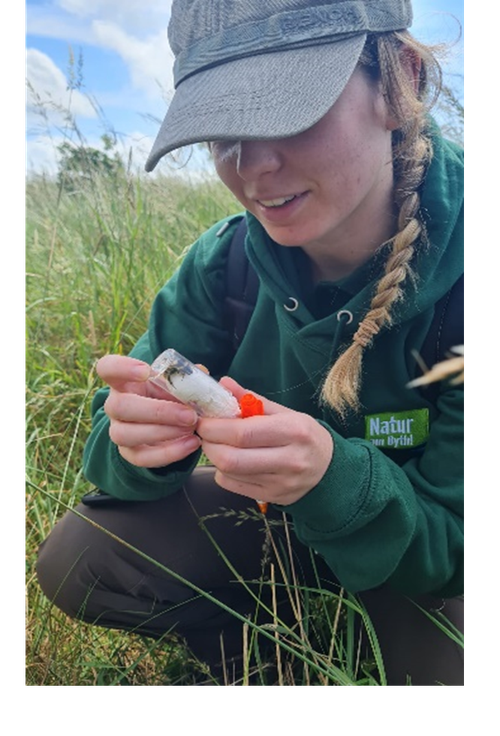
Over my first three months as a Natur am Byth (NaB) trainee, I have been involved in bumblebee and habitat surveys throughout South Wales.
As somebody who used to volunteer on Bumblebee Conservation Trust BeeWalk surveys with my local National Park, it feels surreal that I now get the opportunity to carry out BeeWalks as part of my job!
From Castlemartin MOD range to Kenfig National Nature Reserve (NNR), I have taken part in BeeWalks and botanical surveys in a range of landscapes and habitats, where my target species, the Shrill Carder Bee, are found.
Alongside Project Officer Anna Hobbs, I have created four new BeeWalks across Pembrokeshire in key Shrill Carder Bee habitats. We monitor each BeeWalk monthly, with the vital help of volunteers, who will carry on the legacy of the NaB Shrill Carder Bee project.
Community engagement
As well as BeeWalks and habitat surveys, I have co-lead Bumblebee Conservation Trust engagement events.
In early June, Anna and I lead a schools planting day and bee safari alongside National Trust staff and volunteers at Gupton Farm.
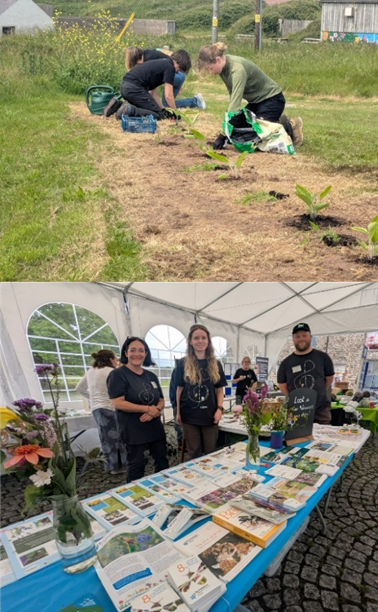
We planted Comfrey (Symphytum officinale) and Narrow-leaved Everlasting-pea (Lathyrus sylvestris), key forage species for Shrill Carder Bees, before going on a bee safari around the site to practice some bumblebee ID.
More recently in mid-July, I co-lead, with staff and volunteers, a Bumblebee Conservation Trust stand at the National Botanic Garden of Wales (NBGW) Bioblitz Festival.
The weekend was filled with interesting conversations with the public and a well-attended bee safari around the walled garden!
Broadscale habitat training
At the beginning of June, I visited North Wales with RSPB Trainee David and Buglife Trainee Lindsey, for our first broadscale habitat training of a montane/arctic environment.
The training was led by NaB Vascular Plants Officer Robbie Blackhall-Miles who took us to some breathtaking landscapes.
The first was Cwm Idwal, where we discussed the transformation of the mountains post glacially and how this is portrayed by the plant communities that are found there today.
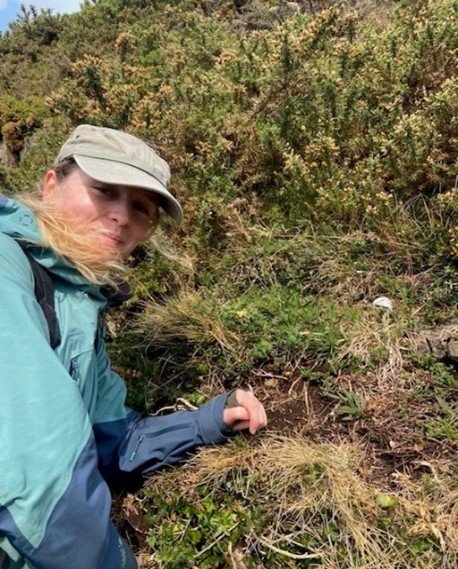
The second was The Great Orme where we saw some rare plant species including Goldilocks aster (Galatella linosyris), another of my target species, in one of its three remaining populations in Wales!
Our second trainee broadscale habitat training was of ancient woodlands. This was based in Powys and led by Welsh Marches Project Officers Josie Bridges and Ellie Baggett.

Over the course of the two days, we got to see a snapshot of the work that the Welsh Marches project is involved in.
We helped complete some lichen monitoring at Gilfach NNR and visited the Oak polypore host site.
We also visited Carngafallt reserve in the Elan Valley to discuss management of ancient and veteran trees, as well as practicing some twig lichen survey training.
National Botanic Garden of Wales
I am based at the NBGW which means that so far in my trainee role, I have been included in lots of amazing opportunities ranging from a visit to Amgueddfa Cymru to see the herbarium and mollusc collections, to moss transplants, insect and plant data collection, lab work and seed collecting.
In the coming months I will be undertaking cross-pollination experiments and pollinator surveys of Goldilocks aster at NBGW, to help us better understand the species and support its conservation in Wales.
NaB partner organisations and projects
Throughout my first few months I have attended various training and workshop opportunities with NaB partner organisations.
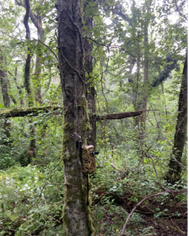
In June I attended a NaB Barbastelle bat (Barbastella barbastellus) workshop with Vincent Wildlife Trust and joined NaB project officer Cathy Jewson in installing bat detectors to check for Barbastelle activity.
At the beginning of July, I also had the opportunity to attend a NaB Short-necked Oil beetle (Meloe brevicollis) training day, led by Buglife Cymru Conservation Officer Liam Olds.
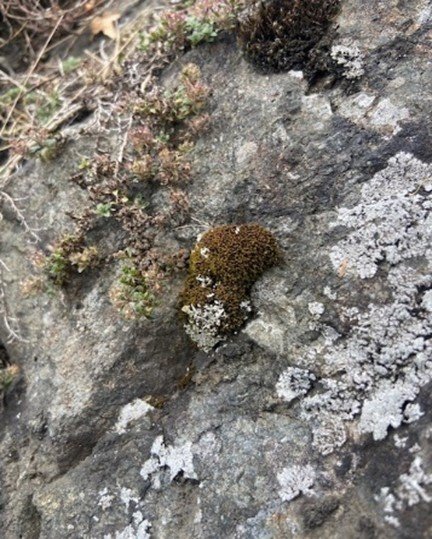
It has been great to have the opportunity to learn about additional NaB target species, with both experiences adding another element of excitement to my Pembrokeshire walks!
Whilst in the Welsh Marches project area in early July, Josie and I visited the sites where NaB target species Upright Apple-moss (Bartramia aprica) and Dog Screw-moss (Tortula canescens) are found.
At the NBGW I have been involved with growing and transplanting both species of moss, so it was great to see both habitats, despite being covered in wood ants for the duration of our visit to Stanner Rocks!
As I continue my Natur am Byth trainee role, I am eager to build on what I have learned so far and I look forward to the exciting opportunities ahead. Stay tuned!